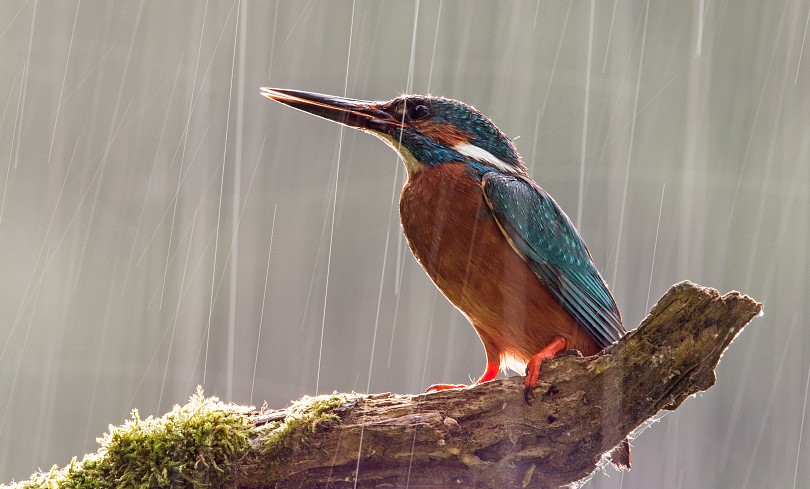Summary: Researchers at Jilin University are mimicking the dewetting strategy of kingfishers to help improve the anti-wetting property of Aquatic Unmanned Aerial Vehicle (Aquatic UAV). Aquatic UAV is a new concept amphibious aircraft that can freely traverse the water-air interface. Having a vehicle that can travel in air, move underwater and then transition back to flight would significantly improve battlefield survivability.

Credit: © WildMedia
"Rain loads and adhered water at the interface can cause a series of problems such as aerodynamic penalty and flight instability, "said Chengchun Zhang, the mechanical engineering professor of Key Laboratory of Bionic Engineering at Jilin University, "Not only did we find proof that kingfishers have robust dewetting strategies, but we also found that these strategies can be applied to the Aquatic UAV."
To verify their hypothesis, the researcher Dr. Zhengyang Wu qualitatively investigated the wettability of kingfisher feathers and the dewetting of elastic interfaces. “The elasticity of the superhydrophobic surface plays a crucial role in the wettability of the interface and should not be negligible,” said Dr. Wu. “We have found that Kingfisher's vibration and movement behavior are very positive for dewetting, no sticky-superhydrophobicity should occur on the surface of the Aquatic UAV”. Their initial testing validated the concept of anti-wetting on the surface of the Aquatic UAV.
“The complexity of the bird’s system makes it hard to replicate artificially, but meeting the demands of anti-wetting in an Aquatic UAV system has been done, ” said their colleague Dr. Yihua Zheng, “Compared with the Aquatic UAV with a hydrophilic surface, the superhydrophobicity reduces the precipitation load by 87.5%. The average absolute velocity of the liquid phase is increased by up to 32% on the superhydrophobic surface via simulation. ”
“Combining anti-dewetting strategies (both passive and active) into a realistic Aquatic UAV would be the ultimate goal,” said Prof. Zhang.” Future researches could address active dewetting strategies for aircraft interfaces, such as active devices (applying electrical charges on the surface, etc.) to minimize water-related aerodynamic penalties".
Journal Reference:
1. Chengchun Zhang, Zhengyang Wu, Xiumei Zhang, Yongli Yue, Jing Wang*. Effect of Feather Elasticity of Kingfisher Wing on Droplet Impact Dynamics. Journal of Bionic Engineering, 2018, DOI: 10.1007/s42235-018-0061-5
2. Chengchun Zhang, Yihua Zheng, Zhengyang Wu, Jing Wang*, Chun Shen, Yan Liu, Luquan Ren. Non-wet kingfisher flying in the rain: The water-repellent mechanism of elastic feathers. Journal of Colloid and Interface Science, 2019, DOI: 10.1016/j.jcis.2019.01.070
3. Yihua Zheng, Chengchun Zhang*, Jing Wang, Yan Liu, Chun Shen, Junfeng Yang. Robust adhesion of droplets via heterogeneous dynamic petal effects. Journal of colloid and interface science, 2019, DOI: 10.1016/j.jcis.2019.09.070
Copyright © 2024 International Society of Bionic Engineering All Rights Reserved
吉ICP备11002416号-1









